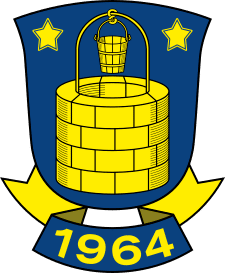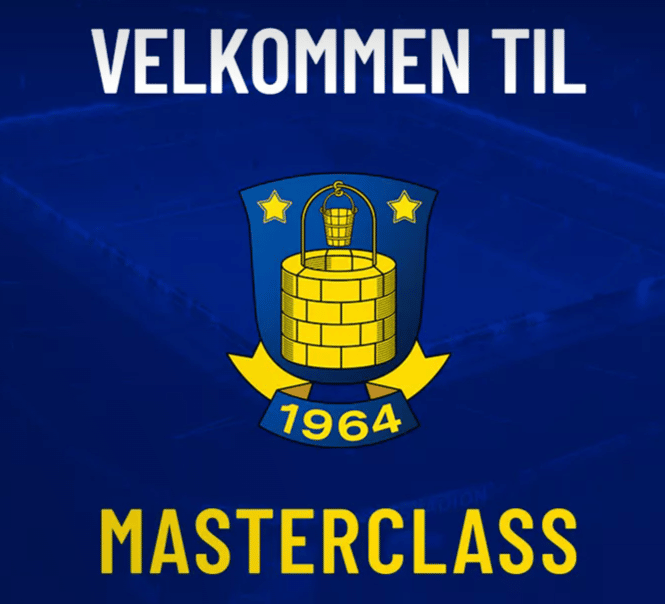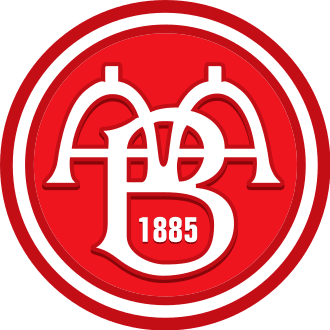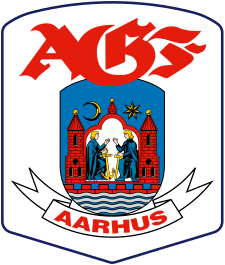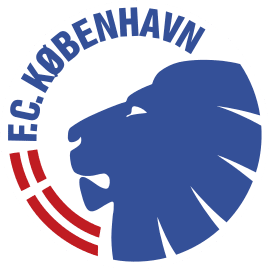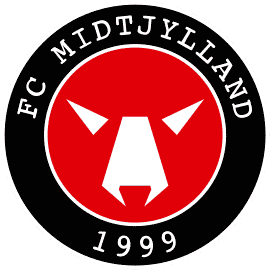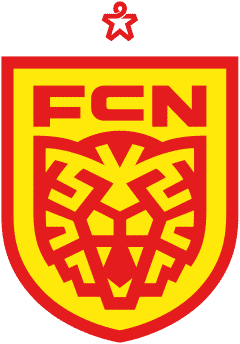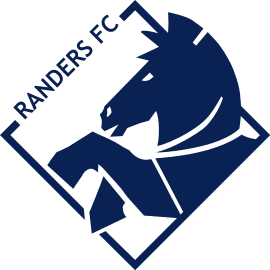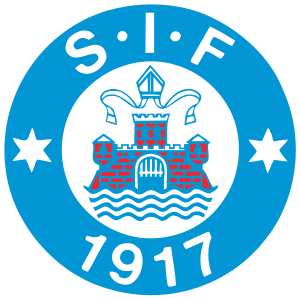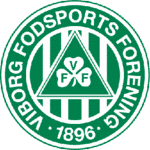Brøndby IF Tryouts & Club Guide: History, Stadium, Players, and More!

Welcome!
Discover the world of soccer with fcscout.com, your go-to scout for club tryout information, club guides, player profiles, in-depth product reviews, and more. We’re dedicated to exploring and revealing the best in each domain, empowering you with knowledge to make informed choices.
Thank you for being here!
Hi, I’m Carlos! A coach, sports enthusiast, and the founder of FCScout.com.
I fell in love with the game at a very young age like many of you. I’ve been following and playing soccer for many years.
Throughout my career, I always enjoyed helping soccer players chase their dreams, which is why I started this website. I wanted to reach a larger audience outside of my local area and fcscout.com was born.
This website is a platform I will be using to update club pages on any tryouts, stadiums, players, tech, and more from clubs around the world. I also create free recruitment profiles for players looking to have that extra competitive edge when reaching out to clubs.
That’s it. That’s my pitch for you to stick around (or browse the site as you please).
This is already too much text for a “see more” drop-down button thing. If you want to reach out to me, head on over to my contact page 🙂

Brøndby IF is a Danish football club based in Brøndbyvester, Denmark. The club currently plays in the Danish Superliga, the country’s highest football league in Denmark.
Brøndby IF Youth Development System
Brøndby IF is much more than a Superliga team. We are one of the country’s largest football clubs, and the main focus has always been to be able to develop talent. The Brøndby IF Elite Academy for players U13 to U19.
It is not something that can be done by individuals, but only through the strong community that is the DNA on which the club is built.
Brøndby Masterclass is the common name for the talent development in Brøndby IF – from U13 to Superliga, while U-Talent from U9 to U12 has progressed towards Masterclass.
For decades, the club has developed a large number of great talents who have made careers in Brøndby IF, in clubs abroad and on the U- and A-national teams.
We are recognized for our way of thinking attractive football as a whole. The talent is cultivated in the community and the experience is a foundation that we share.
In Brøndby Masterclass, we work every day to develop both our own and associated players to a high level that ensures both sporting and financial gain.
See the Masterclass troops U13-U19 here:
As a top-ambitious talent investment, Brøndby Masterclass also has a significant focus on education for the individual talent.
The elite players in Brøndby Masterclass must, in addition to football, be able to take the education that suits them exactly. The range of education that Brøndby Masterclass can offer – in the immediate vicinity of Brøndby Stadion – gives the talents all the opportunities to educate themselves alongside their careers on the turf.
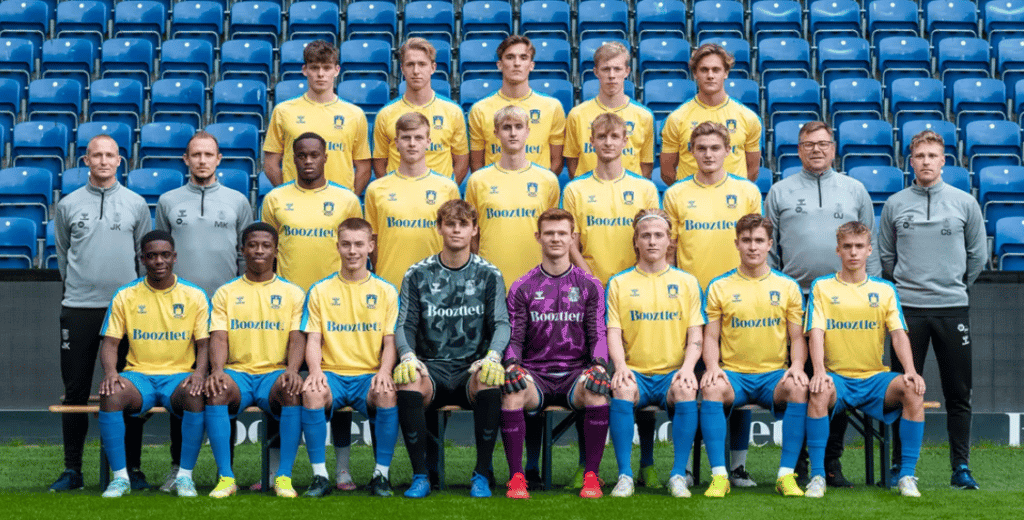
Brøndby IF is very keen on forming the whole person.
We have a clear ambition to not only develop the players’ footballing abilities, but also make sure that they get an education alongside football. It is our experience that in addition to elite football life, it provides a really good break and a good stimulation in the daily life of the individual player to take an education. This means that they will also be well prepared for the time after the elite football season.
Brøndby IF Affiliate Academy Clubs
Brøndby Masterclass The collaboration is the name for our collaboration club concept in Brøndby IF. On this page you can see all our cooperation and friendship clubs.
The co-operation and friendship clubs at Brøndby Masterclass The co-operation has a wide range of opportunities and offers that must add value to the co-operation and friendship club’s children and youth work. Check the map below for affiliate club locations or click here to view them all.
Brøndby IF Academy Player Programs
Brøndby Masterclass Club training U9-U12
With Brøndby Masterclass Club training for U9-U12, coaches from Brøndby Masterclass come out to your club. Click here to learn more.
ATK + center Brøndby U10-U12
At ATK + center Brøndby, selected players U10-U12 get the opportunity for one weekly extra training in Brøndby IF, together with other talented players from the partner clubs. Click here to learn more.
Brøndby Masterclass Talent training U13-U14
Brøndby Masterclass Talent Training U13-U14 is for selected players from the partner clubs. Click here to learn more.
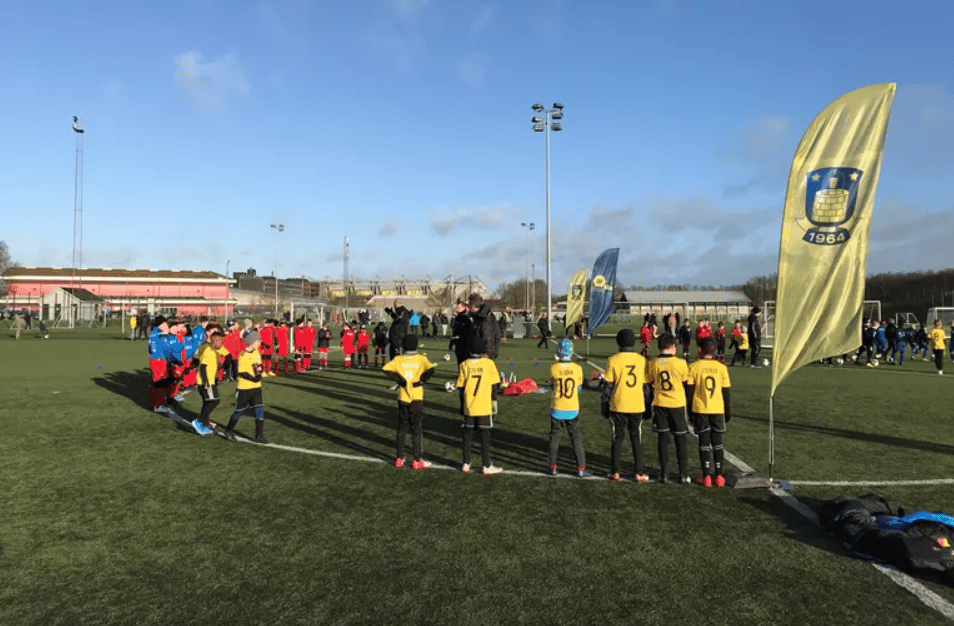
Brøndby Masterclass Training Center U8-U10
At Brøndby Masterclass Training Center, players get the opportunity for 8 extra training sessions a year, together with coaches and players from other partner clubs. Click here to learn more.
Brøndby Masterclass Rallies U7-U11
Meetings during a season for the partner clubs’ A-level teams in the years U7-U11. Click here to learn more.
Nanok Cup U8-U12
Event days during a season for the cooperative clubs’ B / C level teams for the years U8-U12. The competition day offers 3 matches per. team. The teams are then invited to Brøndby IF’s Family Lounge before the trip enters the stadium to watch Brøndby IF play a match at Brøndby Stadium. Click here to learn more.
Brøndby Masterclass Goalkeeper training U10-U12
Brøndby Masterclass Goalkeeper training U10-U12 is an offer for the goalkeepers in the partner clubs. Click here to learn more.
Brøndby Camp
“Brøndby Camp” is the common name for camps in Brøndby IF, but covers a number of different camp types.
The purpose of all camp types is to give the participating player/goalkeeper an opportunity to see how training takes place in Brøndby IF, and at the same time give them a fun and educational experience.
Common to all camps is that there is a high football professional quality, and good coach standardization.
Skilled coaches from Brøndby Masterclass, specializing in children’s and youth boys’ football, are in charge of the training.
Based on this, most camps are aimed at boys players, unless otherwise stated. Click here to learn more.
Brøndby Training Course
To the ambitious player
Our training courses are targeted at ambitious and talented boys who want further development through exclusive and intensified training. Our training course must be seen as a supplement to the player’s training in his own club.
In the training course, emphasis is placed on the development of the individual player’s competencies through individual and relational training exercises targeted at the respective age levels. Click here to learn more.
BrMa U8-U11
- Occurs in spring and autumn.
- Occurs Sunday.
- 10 weeks in a row.
- U8 / U9 train together, while U10 / U11 train together.
- Max. 14 players per. teams for two coaches.
- In the age group U8-U9, it is recommended that you in your club play matches on a daily basis at DBU 1 / A or high 2 / B level.
- In the age group U10-U11, it is recommended that you in your club play matches on a daily basis at DBU SU / A or high 1 / B level.
BrMa Goalkeeper Center U10-U14
- Occurs in spring and autumn.
- Occurs Wednesday.
- 6 workouts, training every 14 days.
- There will be a mix of vintages on the teams.
- Max. 6 keepers pr. team to one coach.
Brøndby Recruitment Trials
At the time of this writing, there are no official publishings on Brøndby trials. Please come back at a later date while we monitor this club or click here to visit their official Facebook news web page.
EXPLORE MORE CLUBS!
Explore more professional clubs by continent.
Brøndby IF History
A regional rivalry between Brndbyster IF and Brndbyvester IF led to the formation of Brndbyernes Idraetsforening on December 3, 1964. This new organization was named Brndbyernes Idraetsforening. It was anticipated that the merger would be successfully completed so that Brndby Municipality could start construction on a new stadium.
Brndby IF made its debut as an amateur team in the Serie 1, which is the sixth tier among the 11 Danish divisions. In both of their first two seasons, the team ended in fourth place in both of those seasons. Among the early players were team captain Per Bjerregaard, a physician who had moved to Copenhagen from Randers in Jutland, and Hans Gregersen, who served as the team mascot until his death from syphilis in 1967. Hans Gregersen had been the team mascot until his death in 1967. After hiring Leif Andersen in 1967, the club was almost immediately successful in gaining promotion to the Sjllandsserien. Following a few underwhelming campaigns, John Sinding was brought in to lead the club through a new beginning, and the club was eventually elevated to the Danmarksserien (the Denmark series).
Per Bjerregaard called it quits on his active career when he was 27 years old and assumed the role of chairman of Brndby. His first action was to remove Sinding from his position as head coach. Finn Laudrup, a former professional player and current member of the Danish national team, was hired by Brndby to take his place. Laudrup took over as head coach while he continued to play for the squad and actively participate in the games. Laudrup joined the Brndby team along with his two young kids, Brian and Michael Laudrup, and his brother-in-law Ebbe Skovdahl. The club’s playing style shifted to a more offensive approach as a direct result of Finn Laudrup’s influence, despite the fact that he made the decision to devote all of his efforts to becoming a player after only a year on the job.
Michael Laudrup, the finest player in Danish football at the time, left Brndby, which was playing in the 3rd Level at the time, to play for KB, which was playing in the Danish top division, which was known as the 1st Division at the time. This move occurred in 1976. One year after that, Laudrup came after them. In 1977, Brndby was promoted to the 2nd Division after successfully adjusting to the new era of professional football in the top Danish leagues in 1978. This made Brndby one of the clubs that were able to successfully adapt to the new times of paid football. After being persuaded by Per Bjerregaard to sign a professional contract in 1981, Finn Laudrup went back to Brndby to continue his playing career.
The fact that Tom Khlert’s club scored 85 goals in 30 games during that season was the deciding factor in whether or not they were promoted to the prestigious 1st Division. Michael Laudrup, who was one of ten players that departed KB that year, returned for the 1982 season as a replacement for his brother Finn Laudrup, whose professional career was cut short at the age of 36. Brndby won their first game in the First Division with a 7-1 victory over fellow promoted team B 1909, thanks in large part to two goals scored by Michael Laudrup.
On June 15, 1982, as a result of his following call-up to the Denmark national team, he received his first cap as a member of the Brndby squad. This cap was awarded to him as a member of Brndby. With 15 goals scored by Laudrup, Brndby finished their first season in the First Division in fourth place. This was Brndby’s first season playing in the First Division. Laudrup was selected as the best player in Denmark for the year.
The sale of Laudrup to Juventus in 1983 was the most significant transfer move in the history of Denmark at the time. This transaction provided Brndby with the financial security to expand as a club. After competing at the highest level for four years, Brndby won their first Danish title in 1985. The following year, in 1986, they competed in their first European match and defeated Budapest Honvéd, the reigning champions of Hungary, by a score of 4-1. The year 1986 marked the beginning of Brndby’s transition into Denmark’s first fully professional team when the club signed ten players to full-time contracts. The club was first publicly traded on the Copenhagen Stock Exchange in the year 1987.
During the latter half of the 1980s, the team dominated the league, and from then until 1992, they never finished lower than second place. The squad was comprised of some of the best players Denmark has to offer, and as a result, from 1987 to 1991, players from Brndby were awarded the title of Danish Player of the Year on an almost annual basis. The champions became the core of the Danish national team, which went on to win the UEFA Euro 1992 as a result of their dominance. The winner of the award was also responsible for the first goal in the tournament’s decisive 2-0 victory. John “Faxe” Jensen (1987), Lars Olsen (1988), Peter Schmeichel (1989), and Brian Laudrup (1990), who won the Danish Player of the Year award four times; Lars Olsen (1988), who was the captain of the national team; and Kim Vilfort (1992), who scored the second goal in the Euro Final. John “Faxe” Jensen (1987), Peter Schmeichel (1989), and Brian Laudrup (1990), who won the Danish Player of (1991).
After the club became accustomed to winning the national championship, it moved its focus to the glory that might be achieved in Europe. After Brndby acquired former national team captain Morten Olsen as their coach in 1990, the club’s brief history culminated with the 1990–1991 UEFA Cup. This achievement is considered to be the club’s greatest accomplishment to date. The various Danish names shone in especially during the merited victory over German teams Eintracht Frankfurt and Bayer Leverkusen, as well as the Russian club Torpedo Moscow, and the club came within a matter of minutes of qualifying for the tournament’s final game.
A goal scored by Rudi Voller in the 88th minute of the semi-final match between Brndby and Roma gave Roma the victory and kept Brndby from advancing to the final of the UEFA Cup. Lars Olsen, Bent “Turbo” Christensen, who was the team’s leading scorer, and Peter Schmeichel, who was the outstanding goalkeeper, were among the major players who departed the organization following the spectacular performance of the relatively minor club in Europe. The worst year in the club’s history was 1992, when the planned takeover of the Danish bank Interbank did not materialize, resulting in the club losing a lot of money. It was anticipated that if Brndby won the European Cup, the value of their stock would increase, which would help fund the acquisition.
However, because the club lost to Dynamo Kyiv in the qualification for the European Cup in 1991–1992, the stock never reached the level required to complete the transaction. Brndby was forced to purchase Interbank, and a financial collapse with club debts totaling 400 million DKK was looming. Financial supporters Hafnia Insurance Company were supposed to take over the purchase in case Brndby was unable to do so. However, when Hafnia Insurance Company went out of business, Brndby was forced to purchase Interbank. The rebuilding of the club was directed by the head coach, Ebbe Skovdahl, who utilized a 4-4-2 formation throughout the process.
The resurgence of goalkeeper Mogens Krogh and forward Ebbe Sand, as well as the return of Euro 1992 veterans John Jensen and Lars Olsen, were all factors that contributed to the team regaining its footing. As a direct consequence of the reconstruction, Liverpool was knocked out of the UEFA Cup competition in the 1995–1996 season, while Roma once again eliminated Brndby. The Danish championship was won by Brndby for the third year in a row, including that year. The following year, in the UEFA Cup, Brndby pulled off one of its biggest upsets ever when it defeated Thomas Haßler’s Euro 1996 winning team 5-0 on the road in Germany, turning a home loss to Karlsruher SC by the score of 3-1 into an aggregate victory.
This was one of the most memorable moments in the history of Brndby’s football club. The most financially significant achievement for Brndby was achieving qualification for the UEFA Champions League, which is the new name for the European Cup. When Brndby was placed in a group featuring Barcelona, as well as later semifinalist Manchester United and Bayern Munich, the club was forced to compete in matches that offered extremely lucrative cash opportunities. The qualification for the Champions League meant that we were assured to play six matches in a group stage among three of the best clubs in Europe. Despite beating Bayern in the first game of the group stage 2-1, Brndby went on to lose all six of their games and finished with just one victory. This was due to the fact that they allowed 18 goals to be scored against them.
Additionally, in the year 2000, the club finished a planned extension of Brndby Stadion, raising its capacity from 20,000 to 29,000. This made it the second-largest stadium in Denmark, only behind the Parken Stadium that is used by F.C. Copenhagen. It was believed that the club had escaped from its previous financial trouble as a result of the large expenditure, which had a price tag of 250 million Danish Kroner. In the fall of 2000, once the construction project had been finished, Brndby met Akademisk Boldklub on October 22 and triumphed 4-2 in front of a crowd of 28,416 spectators.
The announcement that club veteran John Jensen will serve as Laudrup’s assistant when he managed his former team was made by Brndby during the preseason for the 2002–03 season. During the first season of its existence, massive reductions were made to the already large team. Ten players were either sold or moved to the reserves, and in their place, a talent squad was established. The intention of the club was to rely even more on homegrown players despite the fact that Brndby was already well-known for generating players of extraordinary potential.
During the process, Laudrup suggested to a few players that they find new clubs since he was of the opinion that they would not be a good fit for the playing style that he was attempting to cultivate. After a dreadful beginning to the 2007–08 Superliga season, in which the club won only five points out of seven matches, Manager Tom Khlert made it clear in August 2007 that the Danish Cup now had a higher importance for the club. This was in response to the club’s performance in the 2007–08 Danish Cup. The change in strategy proved successful, as on May 1, 2008, Brndby won their first domestic championship in nearly three years by defeating Esbjerg 3-2 in the Danish Cup final. The match was played at Esbjerg Stadium in Copenhagen. Almost immediately after that, club chairman Bjerregaard started seeking for a new manager when the incumbent one, Khlert, stated that he would be stepping down from his job.
On June 16, 2008, the club made the announcement that Kent Nielsen would be taking over as head coach of Horsens. On the first of the year 2009, Nielsen took over as head coach of the first team. In May of 2013, the club was once again on the edge of insolvency, but a small group of investors led by Ole Abildgaard and Aldo Pedersen stepped in and prevented it from going bankrupt. On April 10, 2014, Jan Bech Andersen, the new primary investor, took over as chairman of the board and named his own set of individuals to the position in place of the previous board members.
On July 14, 2014, the club made the announcement that they had reached an agreement with the Danish bookmaker Bet25 to become their principal sponsor for a period of one year, with the possibility of extending the agreement for an additional two years. According to the reports, the value of the transaction was “a significant sum in the neighborhood of one million Danish kroners.” As part of the arrangement, Brndby and Bet25 will establish a strategic connection with one another. In accordance with the terms of the agreement, the Danish telecommunications company TDC A/S provided Brndby Stadion with Wi-Fi in the month of December 2014. (which owns 51 percent of Bet25). On January 15, 2015, Brndby and Bet25 made the announcement that they had extended the deal that they had previously reached through the summer of 2017. In June of 2019, it was announced that Niels Frederiksen, a former coach for Denmark’s under-21 team, would be taking over as the next head coach of Brndby IF. Carsten “CV” When Jensen was promoted to the position of Director of Football in Brndby a month later, he immediately took on the duty of ensuring that the requirements of implementing Strategi 6.4 were met.
In Frederiksen’s first season with Brndby, the team was unable to compete at a high enough level to qualify for the Europa League, hence the club ended up finishing fourth in the league standings. As a result of the departures of key first-team players such as Kamil Wilczek, Dominik Kaiser, and Hany Mukhtar during the January transfer window as well as the emergence of younger players such as Morten Frendrup, Jesper Lindstrm, and Anis Ben Slimane in the starting lineup, the team was widely perceived to be in the process of rebuilding. On May 24, 2021, Brndby won their first Danish league championship in the previous 16 years with a victory against Nordsjaelland by a score of 2-0. Midtjylland is FC Copenhagen’s fiercest adversary, although Brndby finished the season in first place, ahead of Midtjylland.
Brøndby IF Stadium
All of the team’s games have been played at Brndby Stadion thus far. The promise that the mayor of Brndby municipality would construct a field as part of the merging of Brndbyvester IF and Brndbyster IF was fulfilled in 1965 when the field was finished and made available for use by the club. During the first few years of the Danish secondary leagues, the stadium was literally nothing more than a grass field with an athletics track encircling the playing field. During those years, the stadium was used.
It wasn’t until 1978 that construction began on the main stand, which now has a capacity of 1,200 spectators. The squad needed to be able to accommodate 5,000 extra spectators in order to compete in the top level in Denmark in 1982, therefore concrete terraces were constructed in opposition to the main stand during that year. The athletic track was removed after the first few years of success in the top level, and between 1989 and 1990, an extra 2,000 seats were added on top of the concrete stands.
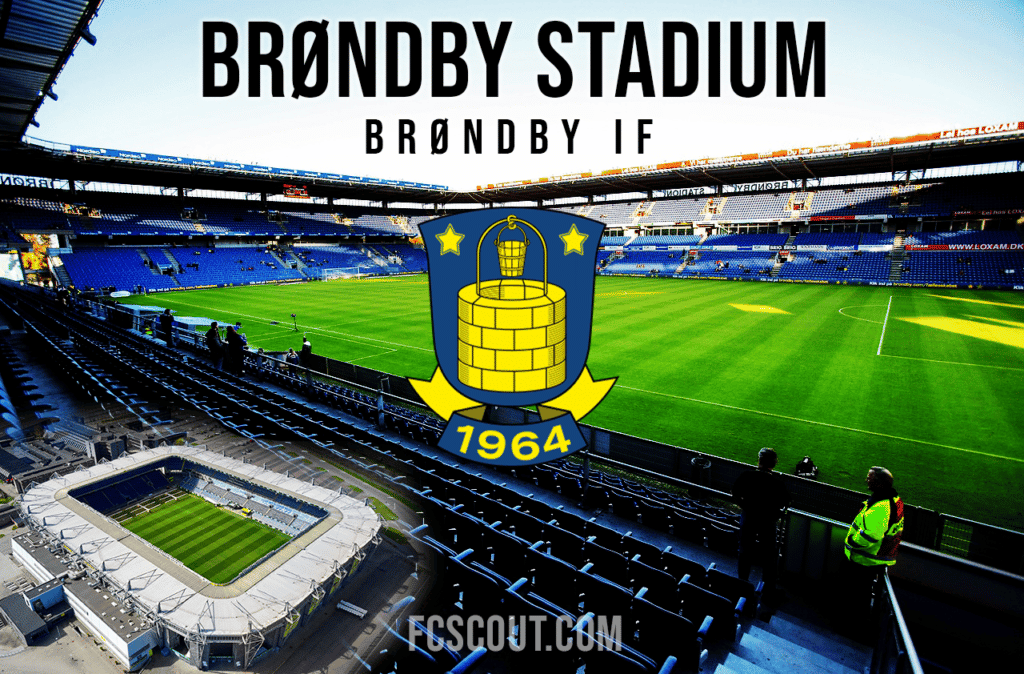
Due to the great demand for tickets, the capacity of the stadium, which had been increased to up to 10,000 people for the 1990–1991 UEFA Cup matches, was immediately exceeded. These matches featured Brndby and other successful European clubs. Because the Denmark national stadium Idraetsparken in Copenhagen was undergoing renovations, the team had little alternative but to construct scaffolding stands in order to expand the capacity of the stadium to 18,000 spectators for the semi-final leg of the competition, which was a 0-0 tie with Roma.
Following its excursion to Europe, the club opened its end stands in 1992, each of which has the capacity to hold 22,000 spectators. In May of 1998, the club purchased Brndby Stadion from the municipality of Brndby for the price of 23.5 million DKK [42], and immediately afterward, they spent twice as much to improve the stadium. When the team qualified for the 1998–1999 UEFA Champions League, the stadium was still under construction. As a result, games had to be moved to Parken Stadium, which is the home stadium of the team’s opponent, F.C. Copenhagen.
The year 2000 saw the building of all stands being standardized to the same height, allowing for crowds of up to 29,000 for domestic games and up to 22,000 for European games, both of which only allows all-seated crowds. Since then, the stadium has been subjected to a variety of lesser or larger infrastructural and technical renovations. In addition, the stadium was able to accommodate 26,031 people for the European match that was played against Barcelona in February of 2004.
